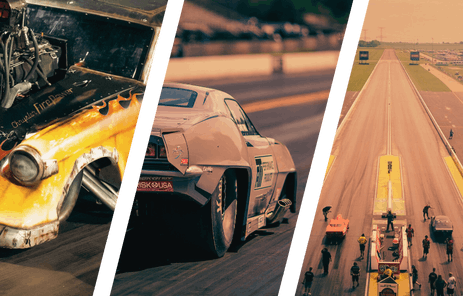The topic of rising fuel costs and its affect on the motorsports industry has become an annual discussion amongst journalists, and each season, the topic takes on an added degree of concern as the affects become more clear and widespread.
With fuel prices surging well ahead of their usual summer ascent, news headlines the world over are currently dominated by political insights into the causes for increased fuel prices, who is ultimately responsible for the pain at the pump, and “expert” looks at just how high the price of a gallon  of gas may reach by mid-summer. Naturally, a case that has such power over every facet of our nation’s economy and personal budgets and therefore our lives dis-entombs the dead horses – domestic drilling, the Keystone Pipeline debate, and President Obama’s approval rating.
of gas may reach by mid-summer. Naturally, a case that has such power over every facet of our nation’s economy and personal budgets and therefore our lives dis-entombs the dead horses – domestic drilling, the Keystone Pipeline debate, and President Obama’s approval rating.
Argue as we might, the fact of the matter is that aside from who we vote for on November 6, there’s virtually nothing that any of us can do to bring down the prices pump. We have to play the hand we’re dealt.
It’s only April and in many parts of the nation, racers are still rubbing their eyes after awakening from their deep winter slumbers, but already on the national level, we’ve seen the toll that near-record fuel prices have had on the back gate…and the front gate.
As of this writing, the national average price of a gallon of regular unleaded gasoline is $3.92, while a gallon of diesel will set you back roughly $4.16, depending on where you’re at. The prices one year ago of $3.64 and $3.97, respectively, were certainly high as they were, but this year we’re already looking at increases of four to seven percent across the board.
Recent NHRA and ADRL national events were played host to noticeably small (or smaller than usual) crowds, and even the almighty NASCAR couldn’t hide the empty seats on the broadcast of their typically sold-out Bristol race. Such scenes become conversation pieces that tend to sway in the direction of ballooned ticket prices and the affect of competing events – and these claims certainly have legitimacy – but the cost of fuel is likely the overlying culprit in all of this.

In a recent poll, Americans revealed $5.30 per gallon as the “tipping point” in their personal budgets where discretionary incomes will take a hit in favor of filling up the tank, but we’re clearly already seeing the “tipping point” in a household budgets in play from motorsports to entertainment to retail shopping.
Fact is, those digits on the pump are only half the story of the bruises on Americans’ wallets, because increasing fuel costs bring about higher prices for every good that we purchase; be it groceries, clothing, electronics, and other essential and non-essential items. At the end of the day, it all adds up to an expensive weekend at the drag races winding up outside of those discretionary incomes.
This is both good and bad for our sport.
The NHRA, ADRL, NASCAR, and other “big show” motorsports venues are taking a hit, no doubt, but local and regional racing venues and more one-off exhibition-type events are benefiting from Americans looking closer to home for their high octane jollies.
Adding to the struggles that many of these series are facing is the sudden proliferation of live feed technology, which has only further motivated former ticket buyers to watch the events from the comfort of their own homes. Sure, this technology has been a great thing for the fan, but it’s a double-edged sword for the racing business. If there are no ticket buyers, eventually there won’t be anything but tumbleweed on your live feeds.

Local dragstrips, many of which have seen waning support in recent seasons from racers and spectators, are on a steady, albeit, slow rise, and this is certainly a great thing for the very core and lifeblood of our sport.
Meanwhile, more affordable and perhaps more local drag racing entertainment venues, such as the IHRA’s bustling Nitro Jam match race-style circuit and local/regional one-night Pro Mod events are bringing in exceptional crowds as they expand upon the business model that such events as the World Series of Drag Racing and Norwalk’s Night Under Fire have proven successful for years and even decades despite sporadic periods of economic upheaval.

The sky isn’t falling on “big show” drag racing just yet, as the NHRA appears poised for a season of stronger car counts in their professional categories than last and the ADRL continues to display the utmost in confidence in the long-term longevity of their series, but record annual fuel prices that are as assured these days as death and taxes that continue to chip away at American household incomes and change how we spend our money is already re-shaping the very fabric of our sport. And depending on your viewpoint, that’s not necessarily a bad thing.
You might also like
PRI 2025: Andy Mcpherson's Awesome Coyote-Swapped GMC Syclone
Andy Mcpherson didn't want to build your average GMC Syclone. His truck is powered by a Ford Coyote engine.



